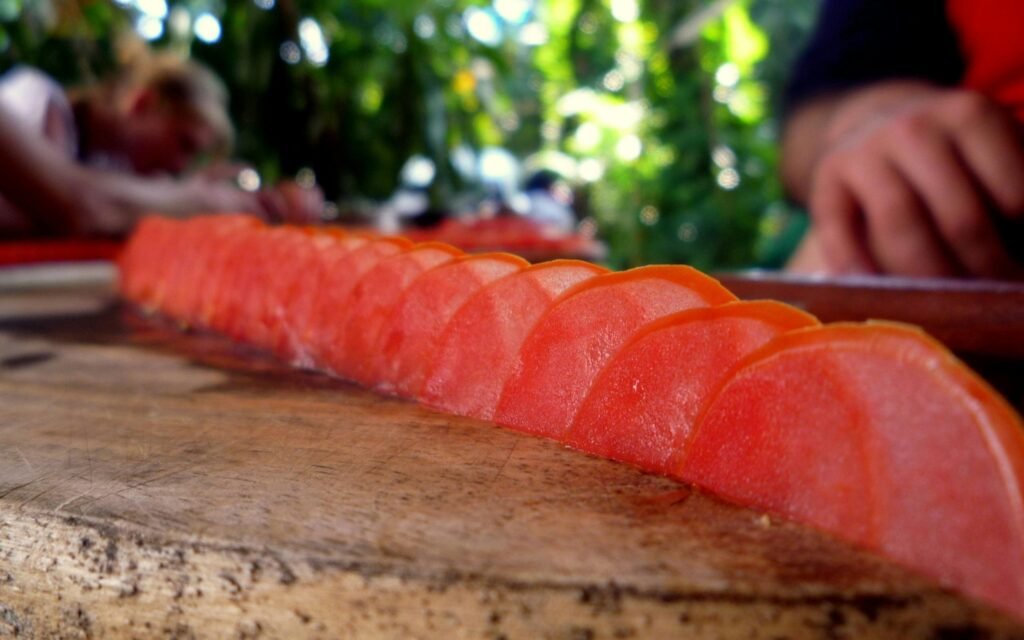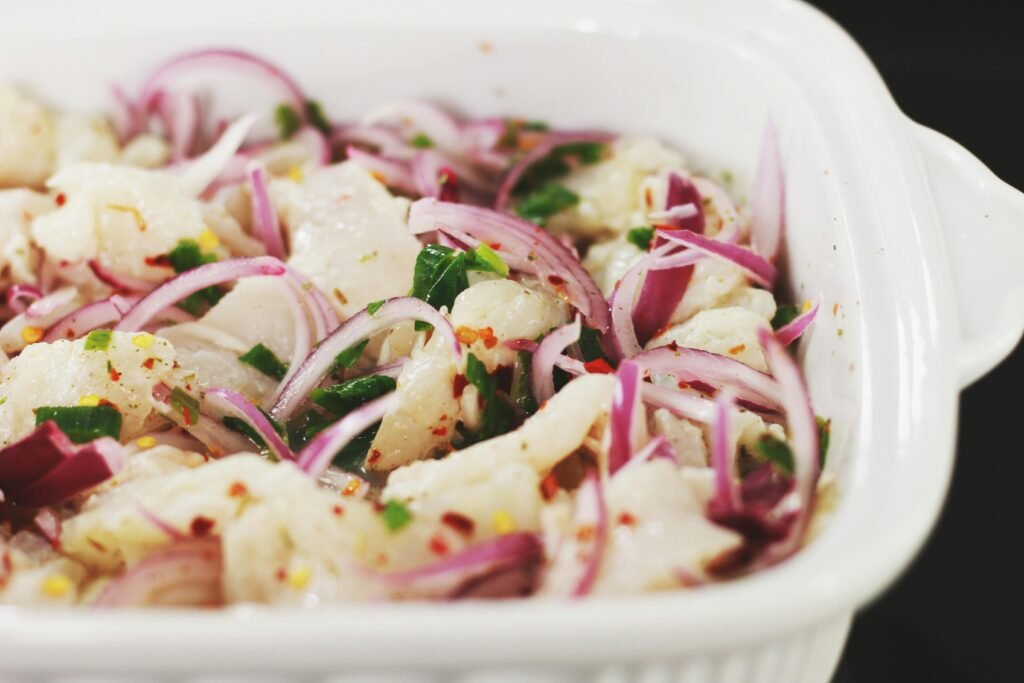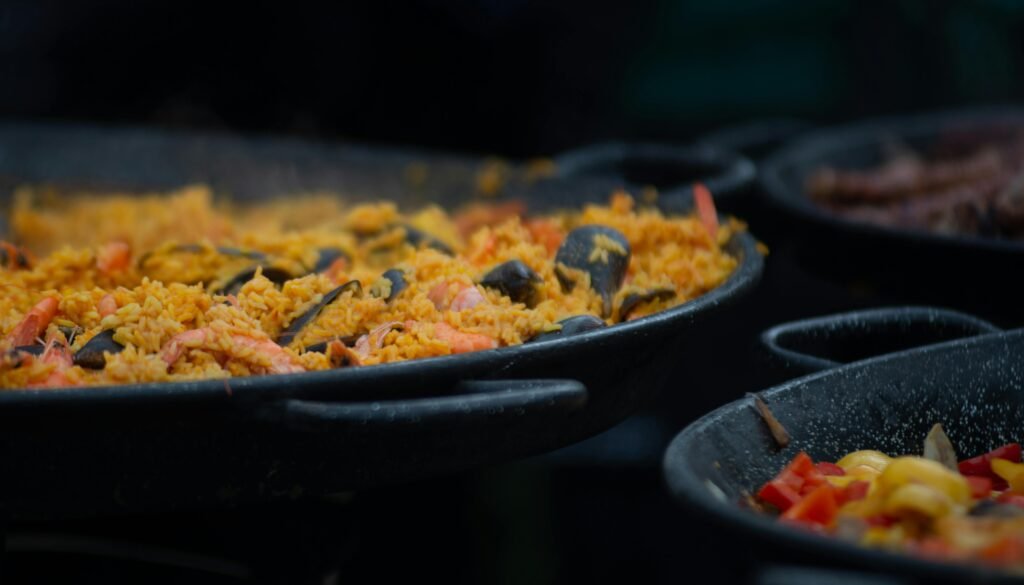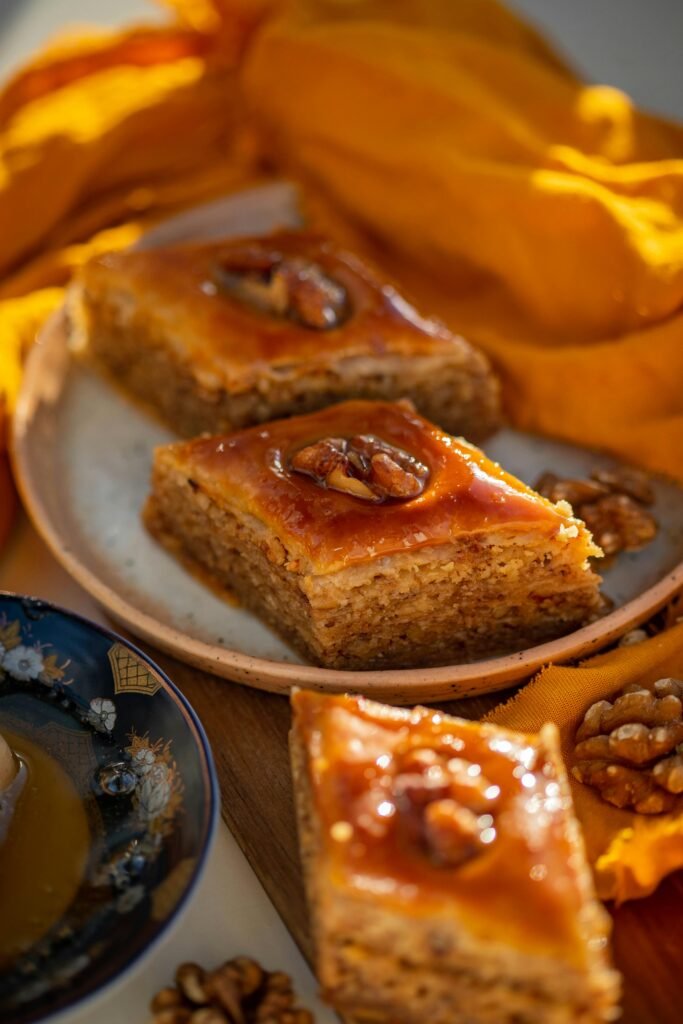Introduction to Culinary Journeys
Food is an essential element of cultural identity, acting as a bridge that connects individuals to their heritage and surroundings. Culinary journeys invite us to explore the diverse array of flavors and dishes that are emblematic of different regions around the world. Each destination is often accompanied by a signature dish that encapsulates its history, customs, and local ingredients. Travelers frequently seek these iconic meals, knowing that they offer a deeper understanding of the culture they are engaging with.

As we embark on these culinary explorations, it becomes evident how intricately food is tied to place. For instance, pizza in Naples, paella in Valencia, and sushi in Tokyo each offer a unique glimpse into the local lifestyle, traditions, and even the geography of their origins. Such dishes serve not only as sustenance but also as stories on a plate, capturing the essence of a destination in a single bite. This invites travelers not only to enjoy their meals but also to appreciate the cultural narratives that accompany them.
Moreover, iconic dishes are often created from ingredients that are locally sourced, mirroring the region’s agricultural offerings and climate. This focus on local produce highlights the connection between the land and its culinary outputs, democratizing food experiences by allowing everyone to taste the history and culture of a place. As we delve deeper into specific regions and their renowned dishes throughout this blog post, we will illuminate how these meals reflect the identity of their destinations and contribute to the broader narrative of cultural exploration.
Khao Soi: The Soul of Chiang Mai, Thailand
Khao Soi is far more than just a dish; it embodies the essence of Chiang Mai and the deep-rooted culinary traditions of Northern Thailand. This aromatic curry noodle soup boasts a rich history influenced by various cultures, particularly Burmese and Chinese. Khao Soi’s origins can be traced back to the mid-20th century, aligning with the increasing intermingling of cultures along trade routes. The dish reflects a harmonious blend of various ingredients and cooking methods, which have evolved over time to create a unique and unforgettable gastronomic experience.

The primary components of Khao Soi include egg noodles, creamy coconut milk curry, and a medley of spices that flow through the dish like the rivers surrounding Chiang Mai. The use of turmeric, chilies, and coriander provides a vivid, flavor-packed profile, while the addition of pickled mustard greens and lime on the side adds a bright contrast, enhancing the dish’s complexity. Traditional Khao Soi is often served with chicken or beef, although vegetarian variations have gained popularity in recent times, catering to a wider audience appreciating the dish’s authenticity.
A visit to Chiang Mai would be incomplete without indulging in Khao Soi at one of the city’s authentic local eateries. Renowned spots such as Khao Soi Khun Yai and Khao Soi Mae Sai consistently delight diners with their delicious renditions. These local establishments project the heart and soul of Chiang Mai, turning Khao Soi into an experience that transcends mere sustenance. Each bowl tells a story of the region’s multicultural heritage, making it a culinary landmark worth exploring. By savoring Khao Soi, one can truly appreciate the meal’s cultural significance, as well as its role in bonding communities over shared diners.
Ceviche: A Taste of Lima, Peru
Ceviche is an emblematic dish that encapsulates the vibrant culinary heritage of Lima, Peru. This refreshing seafood delicacy, primarily composed of raw fish marinated in citrus juices, has roots that date back to ancient times. Early versions of ceviche can be traced to the Moche civilization, which inhabited the northern coast of Peru around 200 B.C. They would use chicha, a fermented drink, to cure the fish, an early testament to the ingenuity of Peruvians in utilizing available resources to prepare delectable meals.
Over centuries, ceviche has evolved significantly, incorporating various influences from both indigenous cultures and Spanish colonization. Today, lime juice is the quintessential marinade, while the addition of ingredients such as chili peppers, onions, and seasonings contributes to the dish’s zesty flavor profile. The interplay of ingredients creates a complex taste experience, characterized by the perfect balance of acidity, spiciness, and a refreshing finish.

Lima boasts a plethora of establishments where authentic ceviche can be savored. To sample this quintessential Peruvian dish at its finest, visiting notable restaurants is essential. For locals and tourists alike, places such as La Mar, Pescados Capitales, and El Mercado stand out. Each venue offers its unique interpretation of ceviche, ranging from traditional variations to modern culinary twists. La Mar, for example, is celebrated for its classic ceviche made with fresh catch and accompanied by sweet potatoes and corn. In contrast, modern spots like Pescados Capitales feature innovative ceviche recipes that utilize seasonal fruits and artisanal seasonings, catering to adventurous palates.
As a celebrated dish, ceviche not only represents Peru’s rich cultural landscape but also serves as a reminder of the nation’s historical connection to the sea. Its continued popularity is a testament to its remarkable ability to evolve while remaining anchored in tradition.
Pasta alla Genovese: The Heart of Genoa, Italy
Pasta alla Genovese is a signature dish that embodies the culinary essence of Genoa, Italy. This beloved recipe features a rich sauce made from slow-cooked onions and tender meat, typically beef, resulting in a robust flavor that perfectly marries the sweetness of the onions with the savory qualities of the meat. The dish dates back to the 18th century and has its roots deeply embedded in the local traditions and culture of Genoa.
The key ingredient in Pasta alla Genovese is the onions, particularly the local variety known as “cipolla di Giarratana.” These onions are renowned for their unique sweetness and are vital in achieving the dish’s distinct taste. The process involves slow-cooking the onions until they caramelize, allowing them to release their natural sugars, which contributes to the depth of flavor that defines this dish. The meat, usually cut into small pieces, is added to the onions and cooked gently to absorb the aromatic essence of the sauce.

When visiting Genoa, there are several establishments that serve authentic Pasta alla Genovese and are highly recommended. Ristorante Da Maria, a family-run trattoria, offers an exquisite version of this dish, prepared with traditional methods that highlight the local ingredients. Another exceptional choice is Trattoria Ugo, where patrons can enjoy hearty portions of Pasta alla Genovese, reflecting the authentic taste and homey atmosphere that the city is known for. Each of these restaurants encapsulates the spirit of Genoese cuisine, ensuring a memorable gastronomic experience for visitors.
Through the artful combination of local produce and time-honored cooking techniques, Pasta alla Genovese serves not only as a delightful culinary experience but also as a testament to the rich food culture of Genoa. This dish undoubtedly holds a special place in the hearts of both locals and tourists alike, inviting everyone to appreciate the flavors of this remarkable destination.
Paella: The Flavor of Valencia, Spain
Paella, a dish synonymous with the vibrant city of Valencia, Spain, has origins steeped in agricultural traditions and Mediterranean gastronomy. Emerging from the fields near Lake Albufera, this rice dish was traditionally crafted by farmers and laborers who used local ingredients and cooked their meal over an open flame. Its historical roots can be traced back to the mid-19th century, where different variations began to take shape, reflecting the diverse bounty of the surrounding land and sea.

There are several varieties of Paella, each distinctive, yet all fundamentally anchored by the use of bomba rice. The most traditional form—Paella Valenciana—features rabbit, chicken, and green beans, creating a savory medley indicative of the region’s agricultural heritage. Seafood Paella is another popular variation, incorporating fresh catches such as shrimp, mussels, and squid. This particular version highlights Valencia’s coastal access and emphasizes the integration of the ocean’s offerings into local cuisine.
What sets authentic Paella apart from imitations is not only the selection of ingredients but also the meticulous cooking technique. Saffron is essential, imparting a vivid golden hue and depth of flavor that is unparalleled. It is worth noting that preparation often involves using a wide, shallow pan to allow optimal absorption of flavors and even cooking. Family gatherings and local festivals often see the communal preparation of Paella, where large portions are made, turning the cooking process into a shared cultural experience.
For those eager to explore this culinary delight in its birthplace, several restaurants in Valencia stand out. La Pepica, located near the beach, is renowned for its classic take on seafood Paella. El Raval, offering classic Valencian flavors, invites diners to immerse themselves in authentic local cuisine. These establishments emphasize traditional recipes and cooking techniques, ensuring that each bite of Paella reflects the rich culinary history of Valencia. Visiting these locales allows travelers to not only savor the flavor of Valencia but also participate in a cultural experience that is best enjoyed with family and friends.
Ramen: The Pulse of Tokyo, Japan
Ramen, a quintessential Japanese noodle soup, serves as a symbol of Tokyo’s culinary landscape. A harmonious blend of flavors and textures, ramen has evolved into a revered dish that encapsulates the essence of Japan’s gastronomic identity. This dish dates back to the late 19th century, when it was introduced from China. Since then, it has undergone various transformations, adapting to local tastes and ingredients, leading to an explosion of regional styles across the country.

The significance of ramen lies not just in its diverse flavors but also in the craftsmanship that goes into each bowl. At the heart of any good ramen is its broth, which is typically prepared using a combination of meat, seafood, and vegetables. Each region boasts its distinct broth styles; for example, Tonkotsu (pork bone) from Fukuoka is celebrated for its rich, creamy texture, while the soy sauce-based Shoyu ramen from Tokyo offers a lighter but savory alternative. The noodles also play a critical role, varying in thickness and texture, from thin and straight to thick and wavy, contributing uniquely to the overall dining experience.
Toppings further elevate ramen, with common additions including slices of chashu (braised pork), aji-tama (soft-boiled egg), green onions, and menma (bamboo shoots). The artistry involved in selecting and combining these components highlights ramen’s status as an art form in its own right. For those visiting Tokyo, a treasure trove of ramen shops awaits, each offering their personalized take on this classic dish. Notable establishments include Ichiran, known for its unique dining experience, and Ippudo, which provides a perfect blend of traditional and modern flavors. Exploring the ramen scene in Tokyo not only tantalizes the taste buds but also immerses one in the vibrant culture and community surrounding this beloved dish.
Poutine: A Canadian Classic from Quebec
Poutine, often regarded as a quintessential dish of Canada, boasts its origins in the province of Quebec, where it has become a beloved staple. This comfort food consists of French fries topped with rich gravy and fresh cheese curds, creating a harmonious blend of textures and flavors that captivates the palate. The exact timeline of its invention remains a topic of lively debate, with multiple establishments in Quebec claiming to be the original creator. However, the 1950s is widely accepted as the decade when poutine first appeared in rural Quebec, gaining its distinct identity amidst the vibrant culinary landscape.
Over the years, poutine has evolved from a local delicacy into a national phenomenon, celebrated in both casual dining establishments and upscale restaurants across Canada. Its rise to fame can largely be attributed to its versatility and adaptability, allowing chefs to experiment with various toppings and ingredients. For instance, some variations incorporate additional elements like pulled pork, smoked meat, or even seafood, transforming the dish into innovative culinary creations. This adaptability showcases the regional pride Canadians have in enhancing the classic poutine recipe.
When seeking out the best poutine, food enthusiasts should explore iconic establishments in Quebec such as La Banquise in Montreal, known for its extensive variety of poutine offerings, or the famous Le Roy Jucep in Drummondville, which is often credited with a traditional take on the classic dish. Visitors to Quebec will find that experiencing poutine is more than just tasting a dish; it is about immersing oneself in a rich cultural experience that reflects the province’s identity. The ongoing popularity of poutine continues to symbolize Quebec’s culinary legacy, making it a must-try delicacy for both locals and tourists alike.
Biryani: The Royal Dish of Hyderabad, India
Biryani stands as a quintessential representation of India’s rich culinary heritage, often referred to as the “royal dish” of Hyderabad. This fragrant and flavorful rice dish, meticulously layered with marinated meat, aromatic spices, and the distinctive essence of saffron, encapsulates the artistry of Indian cooking. The origins of biryani can be traced back to the Mughal era, where it was brought to the Indian subcontinent by Persian travelers and merchants. Over the years, it evolved into numerous regional variants, with Hyderabadi biryani taking a prominent position due to its unique preparation methods and rich flavors.

The cultural significance of biryani in Hyderabad extends beyond mere sustenance; it acts as a symbol of celebration and tradition. Often featured in weddings, festivals, and communal gatherings, the ritual of sharing a pot of biryani embodies the spirit of unity and camaraderie among families and friends. The process of preparing this dish includes meticulously marinating meat—commonly chicken or goat—in yogurt and spices, followed by layering it with partially cooked basmati rice, ensuring that every grain absorbs the succulent flavors. The final touches often include the addition of fried onions and fresh herbs, enhancing both the visual appeal and taste of the dish.
Diners eager to experience authentic Hyderabadi biryani should consider visiting iconic establishments such as Paradise Biryani or Biryani House, which have garnered a reputation for their time-honored recipes. These restaurants serve biryani that honors traditional practices, offering a sensory journey through the vibrant flavors and historical significance embedded in each bite. To fully appreciate this dish, it is often recommended to pair it with cooling side dishes like raita—a yogurt-based condiment—and a salad, further enhancing the overall culinary experience.
Baklava: A Sweet Journey Through Istanbul, Turkey
Baklava is a quintessential dessert that has captured the hearts and palates of many around the world, particularly in Istanbul, Turkey. Its roots can be traced back to the Ottoman Empire, where it was considered a luxury food item reserved for special occasions. The significance of Baklava extends beyond its delightful taste; it exemplifies a rich culinary heritage and reflects the fusion of diverse cultures that have influenced Turkish cuisine over the centuries.

The preparation of Baklava involves a meticulous layering process. Thin sheets of phyllo dough are expertly brushed with melted butter, alternating layers with a generous sprinkle of finely chopped nuts, such as pistachios or walnuts, combined with sugar and spices. This harmony of textures and flavors is then cut into diamond or square shapes before being baked to golden perfection. Once out of the oven, a sweet syrup made from sugar, water, and lemon juice is poured over the hot pastry, allowing it to seep into every layer, creating an irresistible combination of sweetness and richness.
Regions within Turkey boast their own unique variations of Baklava. For instance, Gaziantep is renowned for its pistachio Baklava, while regions near the Black Sea might use hazelnuts. Istanbul serves as a melting pot, showcasing these local adaptations alongside traditional recipes. The vibrant streets of Istanbul offer numerous spots to indulge in authentic Baklava, with establishments such as Karaköy Güllüoğlu, known for its exquisite craftsmanship and flavors, standing out as a must-visit destination. Another notable mention is Mehmet Ali Usta, which has garnered a loyal following for its freshly prepared Baklava.
In essence, Baklava is more than just a dessert; it embodies a storied tradition and provides a taste of Istanbul’s rich cultural history. Whether enjoyed after a lively meal or as a special treat on its own, Baklava offers a sweet glimpse into the culinary treasures of Turkey.
